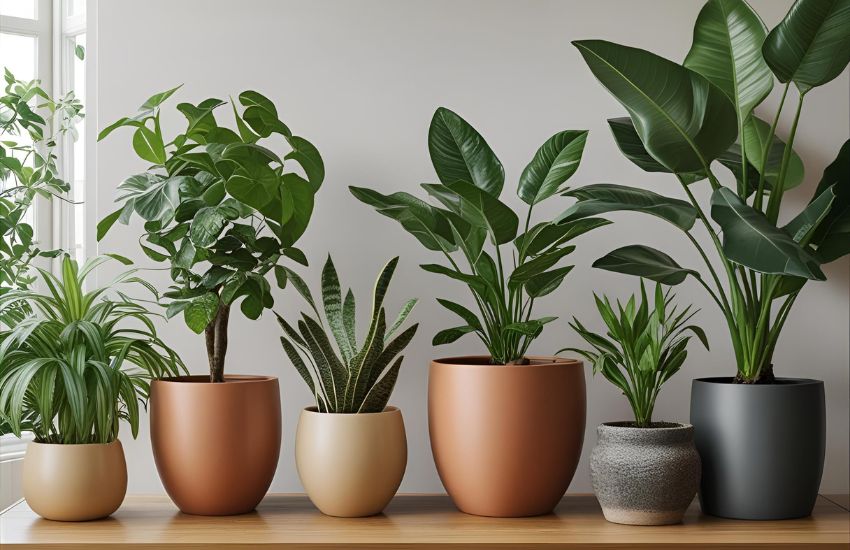Finding the perfect pot for your indoor plant is more than a decorative decision it’s about balance, health, and harmony. You might be drawn to a stylish planter, but does it complement your plant’s needs? From maintaining proper moisture levels to ensuring healthy drainage, the pot you choose plays a vital role in your plant’s growth and overall appearance within your home.
To choose a pot that complements your plant perfectly indoors, ensure it has drainage holes, suits the plant’s size, and matches your space’s aesthetic. Use breathable materials like terracotta or ceramic for better moisture control, and always select a planter that supports healthy root growth.
When you select a pot, you’re not just enhancing the aesthetic of your space you’re also creating the right environment for your houseplant to thrive. Whether you’re torn between a ceramic pot, a plastic pot, or a terracotta option, understanding how texture, drainage holes, and soil types interact will help you choose the right container. A well-chosen planter supports your plant’s root system, prevents overwatering, and aligns with your interior style effortlessly.
In this guide, you’ll learn how to select the best pot by considering size, drainage, material, and design. We’ll walk you through key tips for pairing form with function ensuring your planter not only looks good but works hard. Let’s explore how to make every indoor plant feel right at home.
Selecting the Right Planter Size for Aesthetic Balance and Growth

Why Size Matters When You Choose a Pot
When you choose a pot, you’re not just picking a container you’re deciding how your indoor plant will grow and thrive. The right size directly affects both the plant’s health and the overall aesthetic of your space. A pot that’s too small can restrict root development, while one that’s too large can retain moisture, leading to issues like root rot. The ideal pot gives the roots room to grow without overwhelming the plant.
Understanding Plant Growth and Proportion
As plants grow, they need space that supports their growth rate and habits. A good rule of thumb is to select a pot that’s 1–2 inches larger in diameter than the current nursery pot for smaller plants. For larger plants, aim for 2–4 inches wider. This ensures the plant pot stays proportionate to the foliage, allowing for both function and beauty in your interior space.
How to Match Pot Size With Aesthetic Preferences
To complement your plant and your home style, consider how the size of the pot fits with your furniture, layout, and decor. A tall floor plant may look better in a low, wide geometric flower pot, while a cascading succulent may shine in a tall, slim vase-like container. The key is to maintain a cohesive look that ties the plant and its surroundings together.
Functional Tips for Better Results
When selecting the right pot, don’t overlook practicality. Drainage is crucial make sure the pot for your houseplant has holes to prevent excess water buildup. A decorative pot without holes may need a pot inside, or liner, to control excess moisture and avoid problems like fungus. You can find options at garden centers or through your preferred retailer. Plastic containers may be the cheapest and lightest option but tip over easily. Porous materials like terracotta are a better option for plants that prefer to dry out, while plastic containers work well for plants that need to retain moisture.
Conclusion
Choosing the ideal pot is a vital step toward helping your plants grow strong, healthy, and beautiful indoors. A well-sized planter not only supports proper root expansion but also brings visual harmony to your space. Whether you’re working with smaller plants, trailing vines, or large foliage, always consider what your plant prefers—from material to shape and size. For moisture-loving species, porous materials like terracotta may not be ideal, while drought-tolerant plants like succulents benefit from quick-drying containers.
Keep in mind that drainage is crucial. If you’re using a decorative pot without holes, always place a pot inside with adequate drainage to prevent leading to root rot. Every pot is more than just a container—it’s a companion that supports your plant’s long-term well-being.
Ready to get a plant or refresh your collection? Make your next choice count. Select the ideal pot that both complements your plant and enhances your home. Let your planter do more than just hold—let it help your plant thrive.
Frequently Asked Questions (How to Choose a Pot That Complements Your Plant Perfectly Indoors)
What size pot should I choose for my indoor plant?
Select a pot that is 1–2 inches larger in diameter than your plant’s current root ball. A pot that’s too small restricts growth, while one that’s too large can retain excess water and lead to root rot.
Do all indoor plant pots need drainage holes?
Yes, drainage holes are essential to prevent overwatering and root rot. If you love decorative pots without drainage, use them as covers (cachepots) by placing your plant in a plastic nursery pot inside.
How do I match a pot style with my plant?
Consider the plant’s shape and foliage. Minimalist plants like snake plants look sleek in modern, neutral pots, while trailing plants pair beautifully with textured or hanging planters. The pot should complement, not overpower, the greenery.
Which material is best for indoor pots?
Terracotta is breathable and great for plants that dislike sitting in moisture, like succulents. Ceramic pots offer style and weight but may need extra care. Plastic pots are lightweight, versatile, and retain moisture longer. Choose based on plant needs and your decor.
